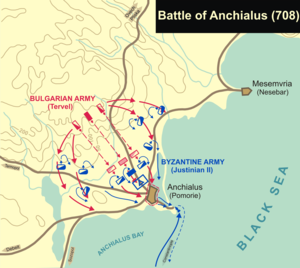|
708
 Year 708 (DCCVIII) was a leap year starting on Sunday of the Julian calendar, the 708th year of the Common Era (CE) and Anno Domini (AD) designations, the 708th year of the 1st millennium, the 8th year of the 8th century, and the 9th year of the 700s decade. The denomination 708 for this year has been used since the early medieval period, when the Anno Domini calendar era became the prevalent method in Europe for naming years. EventsBy placeByzantine Empire
Europe
Asia
By topicMedicine
Religion
Births
Deaths
References
|